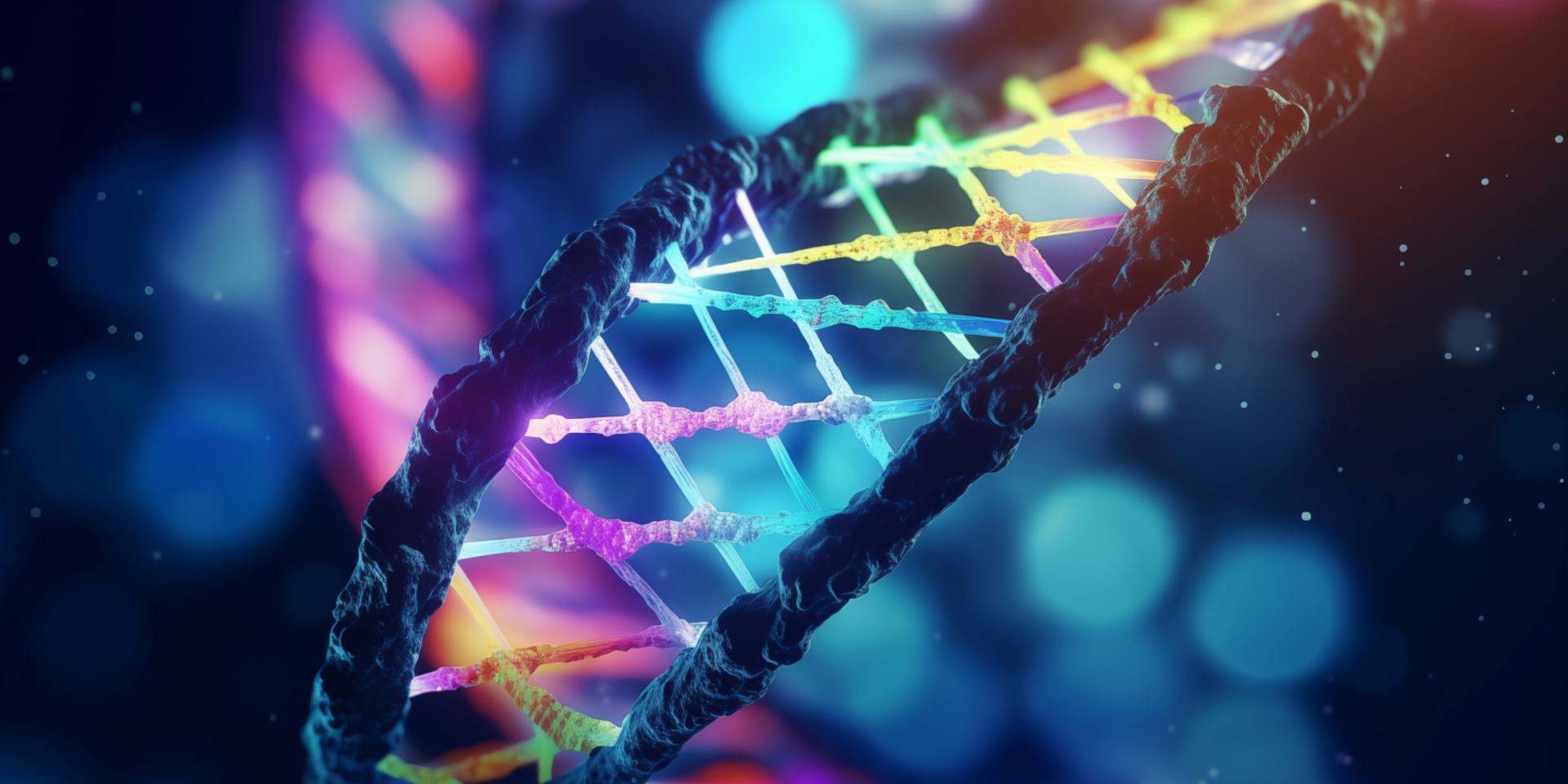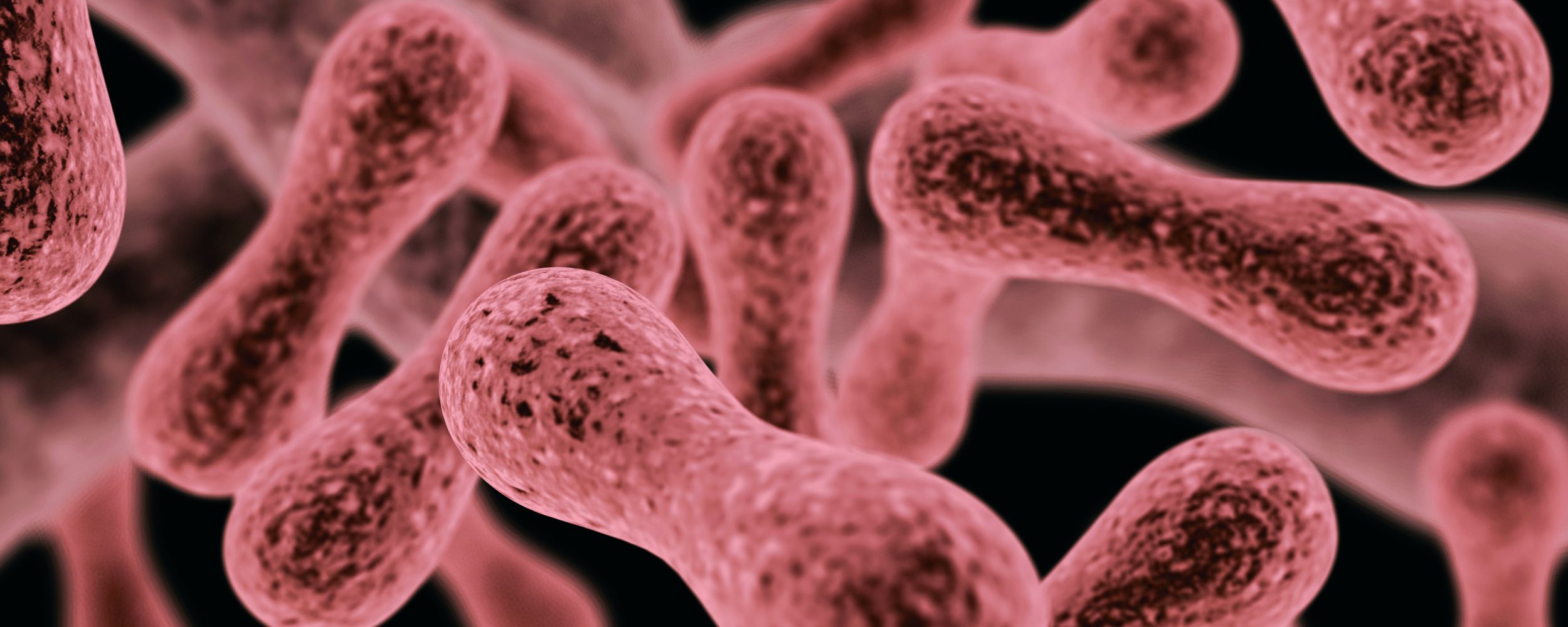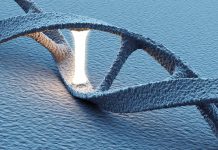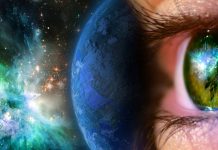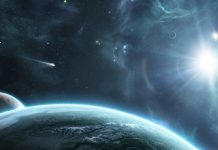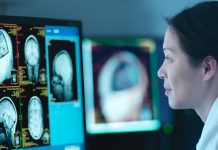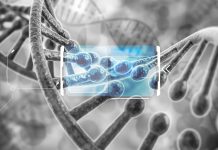Scientific progress in understanding the DNA molecule and in deciphering the molecular mechanisms by which cells function can only be described as revolutionary. In the first of our “Genetics and Evolution” series of articles we examine the implications of these discoveries for evolutionary and creationist perspectives on the origin of life.
In all the scientific fields involved—from geology, archaeology, and palaeoanthropology to philosophy of science and cosmology—there is now only a small minority of scientists who believe in the existence of an intelligent Creator of life. This belief challenges and irritates an increasingly intransigent scientific community which, despite all its internal variations and divisions, is united around a central theory: chance is the great designer of life, and its main tool is natural selection. This is the theory of evolution by natural selection.
At the heart of the controversy between evolutionism and creationism, as is only natural, are the life sciences and biology in general. Recently, however, attention has increasingly shifted to a couple of disciplines that have developed dramatically in recent decades, namely genetics and molecular and cellular biology. Discoveries in these fields, produced at a dizzying pace and interpreted almost exclusively from an evolutionary perspective, have imposed a number of ideas and clichés on the public. Who hasn’t heard phrases like “Humans are 98% genetically identical to chimpanzees,” or “New genetic studies detail the tree of life,” or “Genetics confirms Darwin,” and the like?
This article therefore marks the beginning of a series called “Genetics and Evolution”, which will attempt to popularise another key to understanding the great discoveries in genetics and molecular biology. In subsequent articles, we will also focus on a rational critique of the evolutionary perspective on the complexity of life.
Our cells
Biologically, humans are complex multicellular organisms. Depending on the physical characteristics of each individual (tall, short, thin, fat, healthy, sick), the cellular composition of the human body can vary considerably. On average, however, it is estimated that an adult body contains more than 37 trillion cells. How big is this number? If we could count 100 cells every second without stopping, it would take almost 12,000 years to reach 37 trillion cells! But even this figure doesn’t tell the whole story, because over the course of our lives, many more cells end up living in our bodies, thanks to the continuous process of cell regeneration. At different intervals, depending on their type and function, cells die and are replaced by new ones. As such, apart from neurons and a few other cell types, it is difficult to find a cell in the entire human body that is more than ten years old.
The complexity of the arrangement of cells in the human body is astonishing: just to take the circulatory system as an example, our cells are constantly nourished by a vast network of blood vessels of incredible length, estimated at 95,000 km, or about two and a half times the circumference of the Earth at the equator.
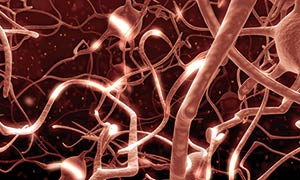
The nervous system is equally impressive. If you were to add up all the nerve cells that innervate the human body, excluding the brain, you’d end up with a length of about 70 km, or roughly the circumference of Bucharest. As for the brain, of the total number of cells in an organism, it contains more than 100 billion nerve cells, making synaptic connections of the order of a hundred trillion, transmitting electrical signals at speeds of up to 400 km/h. This vast complex of neurons, synapses, and electrical signals, only partially understood by science, forms the biological basis of all cognitive functions, reason, emotion, and consciousness.
The cells that are not our own
But these amazing facts about our cells are only the beginning. Compared to the number of our own cells, our bodies contain up to ten times as many cells that are not ours, that are foreign to us: bacteria and other microorganisms that live in and on us, and with which we generally have a beneficial symbiotic relationship. They do not have our genetic material and do not come from the mechanism of sexual reproduction by which our bodies came into being, but are added along the way from the external environment: first from the mother, during foetal development and through breastfeeding, and then through contact with the environment.
These microorganisms (mainly bacteria, but also members of the Fungi and Archaea kingdoms) are grouped together under the generic term of ‘human microbiome’.
Although their exact role is still the subject of intense research, it is clear that they find a favourable environment in our bodies and, in return, often provide essential help with digestion, various chemical processes or in the fight against other harmful microbes. The size of the human microbiome is estimated to be at least 100 trillion microorganisms, but they are usually much smaller than our cells—if you put them all together, they would take up a volume about the size of a bowl of soup.
The reinforcement of organisms
Although our cells have the ability to bond together to form tissues, these bonds are not strong enough to give shape and structural strength to organs and the body in general. This is achieved by a whole network of fibres outside the cells, made up mainly of carbohydrates and long proteins such as collagen and elastin. This is the extracellular matrix, and it provides tissue reinforcement, a structured environment in which cells anchor themselves.
In addition to its obvious morpho-structural role, the extracellular matrix plays an extremely important role in the development of the body, in the mechanisms of tissue healing or in the process of maintaining the normal functioning of organs (homeostasis). The extracellular matrix is secreted and maintained by a special class of cells called fibroblasts. The simplest example of the role of the extracellular network is our skeletal system. Although bones also contain cells, their only function is to maintain and form the bone extracellular matrix, which consists mainly of proteins in the form of collagen fibrils and minerals. The bone extracellular matrix is the main constituent of bones, giving them their shape and formidable structural strength.
If we were to compare the average size of a human cell to the size of an apple, then the size of a bacterium in the microbiome would vary between an apple or a cherry seed, and the proteins that make up the extracellular matrix would look like extremely fine hairs. At this scale, a human would be at least 10 km tall!
What do cells look like?
As basic building blocks (thought in Darwin’s time to have minimal internal complexity), cells have often been compared to the bricks we are made of. While such a comparison helps us to grasp the bigger picture, it is inaccurate and inadequate to what we now know about cells. There are at least three lines of evidence to support this conclusion.
First, cell biology has shown us that cells, far from being simple, almost structurally irreducible bricks, exhibit a very high degree of complexity and internal organisation. A simple eukaryotic cell, anonymous among the trillions of cells in our bodies, can easily be compared in complexity and sophistication to major technological achievements such as a military submarine or an extensive mechanical components factory.
Secondly, unlike bricks, cells come in many different types that bear little resemblance to each other. From the dendritic appearance of the neuron to the long, slender shape of the muscle cell to the hard-to-define shapes of cells that secrete various substances, there are over 200 major cell types in our bodies, extremely diverse in form and function. This diversity of cells is united only by major characteristics, such as the fact that they share the same genetic material (DNA) or that they are the smallest biological units that can reproduce independently.
Last but not least, a brick building does not build itself and does not repair itself. The great architectural achievements of mankind are structures that required a huge effort of intelligence, energy, and logistics to create: plans, simulations, building sites, prefabrication, etc. The basic units, the “bricks,” were put in place by external factors of intelligence and power, and only these external factors are capable of making changes related to repair or maintenance. This is not the case with living organisms. The plan that produced the organisation and development of any multicellular body is completely “encoded” in each individual cell, and the cells are intelligent enough not only to build the multicellular body, but also to keep it in working order and to repair it when necessary.
It’s as if a car sitting next to a pile of raw materials (ferrous and non-ferrous minerals, plastics, oil, etc.) begins to take in these raw materials, process them, and gradually but rapidly transform itself into a car factory—first smaller, then slowly, slowly into a huge, fully automated industrial unit producing thousands of cars similar to the one that started it all. Sounds incredible? Well, this example probably seriously underestimates the complexity of the developmental process of a multicellular organism like the human body.
Inside the cell
In very general terms, a eukaryotic cell (the type of cell that makes up our bodies) consists of an outer flexible phospholipid membrane that separates the inside of the cell from the outside environment. The liquid medium inside is called the cytoplasm, and floating in the cytoplasm or anchored by the cytoskeleton are over 20 types of cell organelles.
Also dispersed in the cytoplasm are most of the proteins produced by the cell, complex nanomachines that perform almost all of the cell’s functions. It is estimated that human cells produce more than 250,000 different types of proteins, an absolutely staggering number of different types of molecular machinery and components. At the heart of the cell is the nucleus, where DNA molecules, grouped into chromosomes, are stored.
The DNA molecule
It is now recognised that both the general blueprint of an organism and its individual characteristics are “encoded” in DNA molecules, which are grouped into chromosomes and copied in their entirety into the nucleus of each somatic cell in our body.
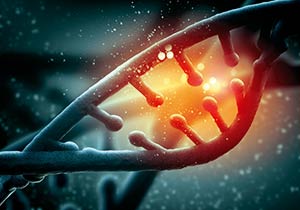
The deoxyribonucleic acid (DNA) molecule is made up of a string of chemical building blocks called nucleotides (or bases) which, together with other attached molecules, form chromatin—the substance from which chromosomes, the main organisational units of DNA, are made. Put simply, a chromosome is made up mainly of a molecule of DNA, enriched with all sorts of other useful molecules. A human being has the same 22 pairs plus one of chromosomes in each somatic cell, each pair of 22 being made up of one chromosome inherited from the mother and one from the father (the 23rd pair is more special and determines a person’s sex). It is very important to understand that each somatic cell in a person’s body has exactly the same 23 pairs of DNA molecules as any other somatic cell in the same person’s body.
If we consider just one representative of each pair of chromosomes, the 23 DNA molecules contain over three billion nucleotides (there are four possible types of nucleotides, known as A, C, G and T, corresponding to the initials of each molecule). The human genetic code is therefore a long string of over three billion letters from the A, C, G, and T set. If we were to transcribe this “code” from base 4 to base 2, which is how computers work, we would end up with 760 megabytes of information, or about the capacity of a CD. On the other hand, if we were to stretch out the “ball” of DNA from a single cell, we would get a length of about three metres (a gigantic size compared to the microscopic dimensions of the nucleus in which this DNA is packed).
These 760 megabytes spread over three linear metres contain all the information that defines a human being. From the general plan of the body, its individual characteristics, to how its component cells function and interact, everything is contained in this complex of information.
The revolution in knowledge in genetics and molecular biology that I mentioned at the beginning of this article has to do precisely with the exploration of these highly complex and well-organised processes that transform the information in DNA molecules into instructions for the composition and functioning of individual cells and the body as a whole. The DNA molecule is therefore a veritable programming language of life, which humans have only just begun to decipher.
The watch and the watchmaker
A well-known argument in the debate between creationism and evolutionism on the origin of life, first put forward by the Christian philosopher William Paley in the early 19th century, is the watchmaker analogy. In essence, it can be expressed as follows: If you were walking along the beach one summer morning and you found a totally surprising object such as a watch in the innumerable grains of sand, you would immediately know that this watch had at some point been conceived and created by someone, i.e. a watchmaker, and placed or lost in the place where you found it. If you found other objects, say a lighter, a compass, and a calculator, you might wonder how they ended up on the beach, but under no circumstances would you think that these objects of advanced functional complexity and precise functional purpose somehow came into existence without having been created by an intelligent author.
The above argument is common sense. Moreover, this way of thinking is based on all our experience of functionally complex objects—from the point of view of inductive thinking, it is scientific to assume the existence of an intelligent creator of complex things that serve a precise purpose.
It’s the same principle that applies to respectable scientific practices: radio astronomers search for extraterrestrial civilisations by analysing even the smallest anomalous signals that appear in the cosmic radio wave noise; archaeologists search for surprising angles and patterns in aerial photographs to discover long-lost relics; military analysts scan vast satellite images, alert to the smallest clues that might indicate the presence of a hidden enemy base or camouflaged equipment. The argument for the existence of a Creator, derived from the very existence of the functional complexity of life, is therefore an indisputably valid scientific argument and the most straightforward explanation for the existence of life; the argument is perfectly intelligible even to a child and boils down to this formulation: life presupposes an author of life, just as a watch presupposes the existence of a watchmaker. And the more functionally complex the object under study, the greater the probability of the existence of a creator of that object.
Evolutionary theory
What is the evolutionary perspective on the incredible complexity of the phenomenon called life? The theory of evolution by natural selection is based primarily on a generalising principle, the principle of small steps over very long periods of time. The basic idea is that, given enough time, the small steps of “random” change, steps “guided” by natural selection, will inevitably lead to the accumulation of new functional complexity, possibly advantageous in the struggle for survival. According to evolutionary theory, the watchmaker argument is not fundamentally wrong, it just needs to be “enriched”, in the case of living organisms, with a few extra elements.
First, the time factor: a simple walk on the beach on a summer morning is not enough, say evolutionists—we should study the beach for a long time to see how the watch got there.
Next, we are urged to remember that the beach is not empty—there is not just one watch on the beach, but a multitude of types of watches and other objects, which can apparently be arranged from simple to complex, just as in nature there is not just one organism, but a multitude of organisms of many types, with varying degrees of complexity, interacting with each other.
Finally, common components must be considered: the watches and other objects on the beach are composed of components that appear to be common, or at least similar, just as multicellular organisms are composed of cells or organ types that are similar.
With these three additions, evolutionary theory responds to the watchmaker argument in the following way: not only did a single watch land on the beach without having been created by a watchmaker, but a whole ecosystem of watches and other mechanisms “evolved” together, slowly and aimlessly, over vast periods of time. And the watch found on the beach is just a “snapshot in time” of this process, and therefore “seems” inexplicable without the existence of a watchmaker.
The struggle for reason
For thousands of years, humans have enjoyed an incomparably lower level of understanding of the complexities of life and have been limited in their attempts to know themselves and their environment by what they could grasp with their senses and little knowledge. Throughout the ages, however, the result of this contemplation has been almost unanimously the same: wonder and gratitude for a more-or-less-known Creator. In the pages of the Old Testament, King David sums it up in one of his psalms: “For you created my inmost being; you knit me together in my mother’s womb. I praise you because I am fearfully and wonderfully made; your works are wonderful, I know that full well” (Psalm 139:13-14).
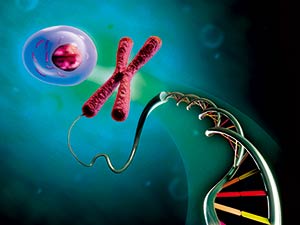
Until about a century and a half ago, this was the “rational” attitude of most of the educated classes and beyond. The existence of a Creator of life was accepted as a logical necessity. Since then, the human family has made enormous progress, especially in our understanding of how life works, but despite the discovery of the incredible complexity that governs it, an understanding that King David never even dreamed of, today’s world is tributary to a belief diametrically opposed to David’s.
Why is the argument for the necessity of a Creator, based on the astonishing functional complexity of life itself, weaker today than when we knew less? Why has the theory of the random development of life—that is, the theory of evolution—become the new “rational” option for the world in which we live, now that we know more than ever before about the colossal proportions of the complexity of organisms? In future articles we will examine in detail the evolutionary view of the complexity of living organisms and subject it to a rational critique in the light of the great discoveries in genetics and molecular biology.












